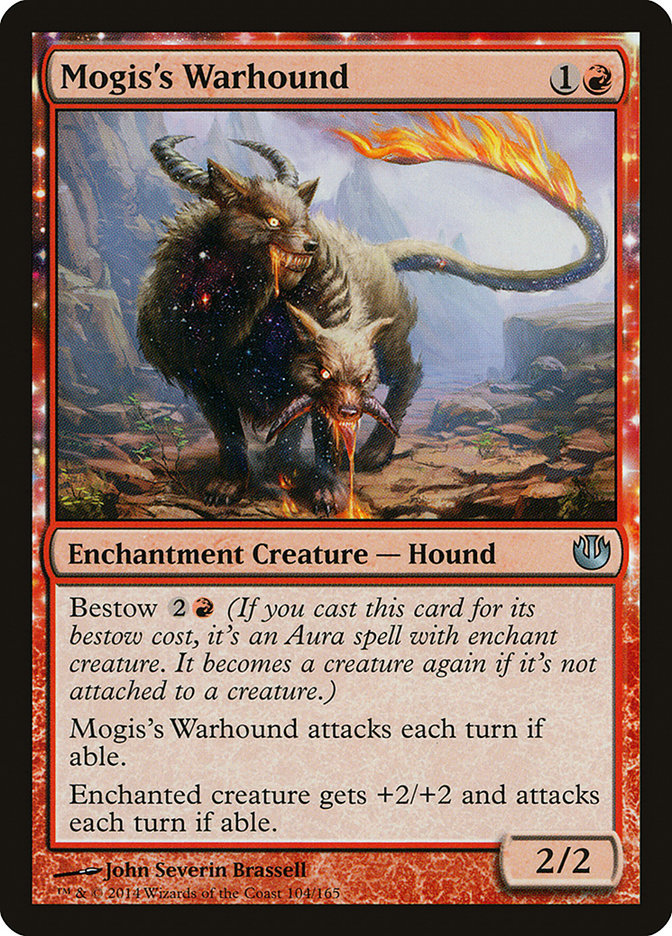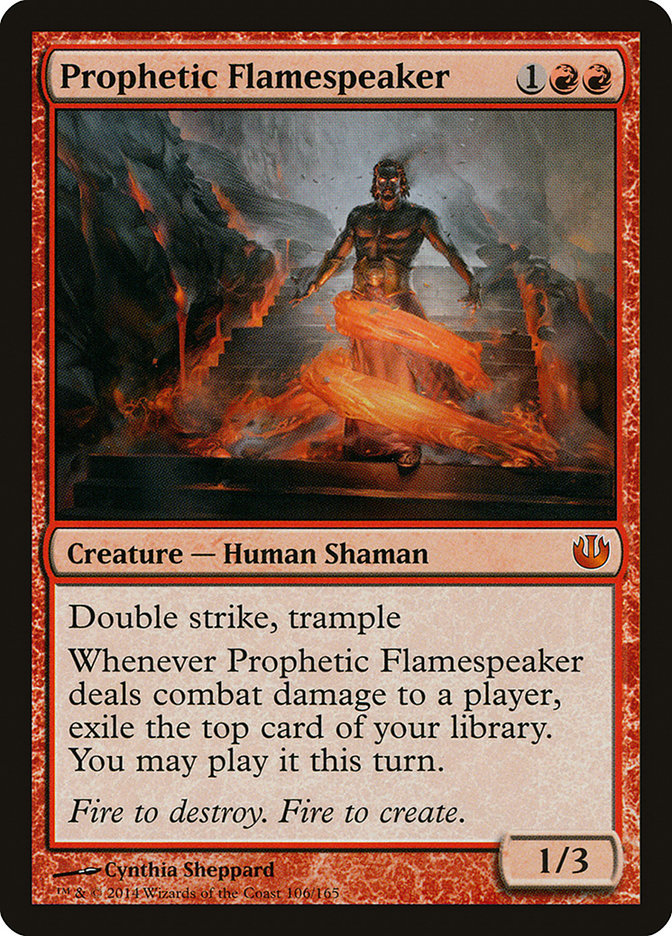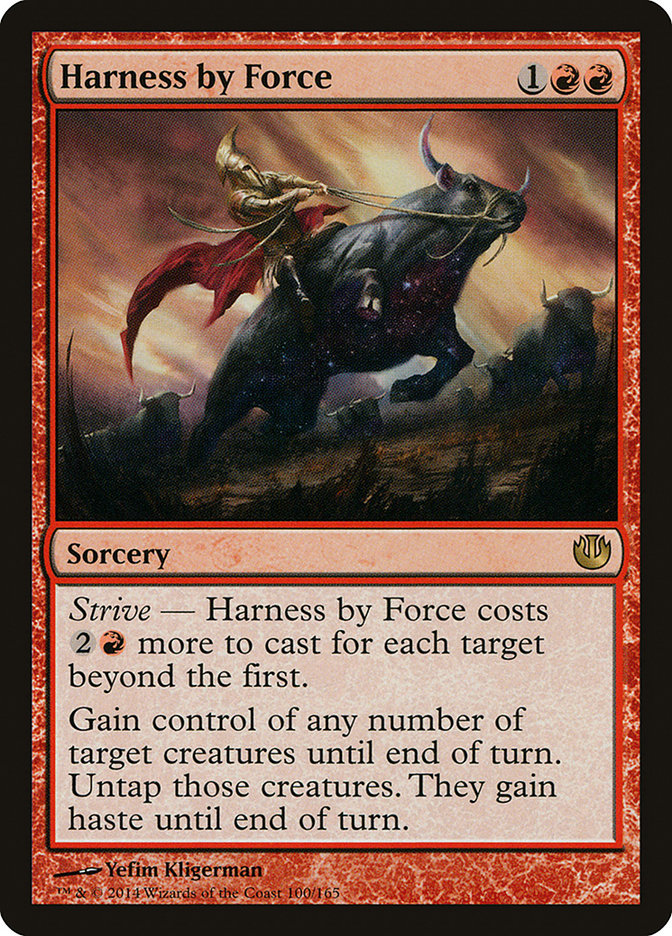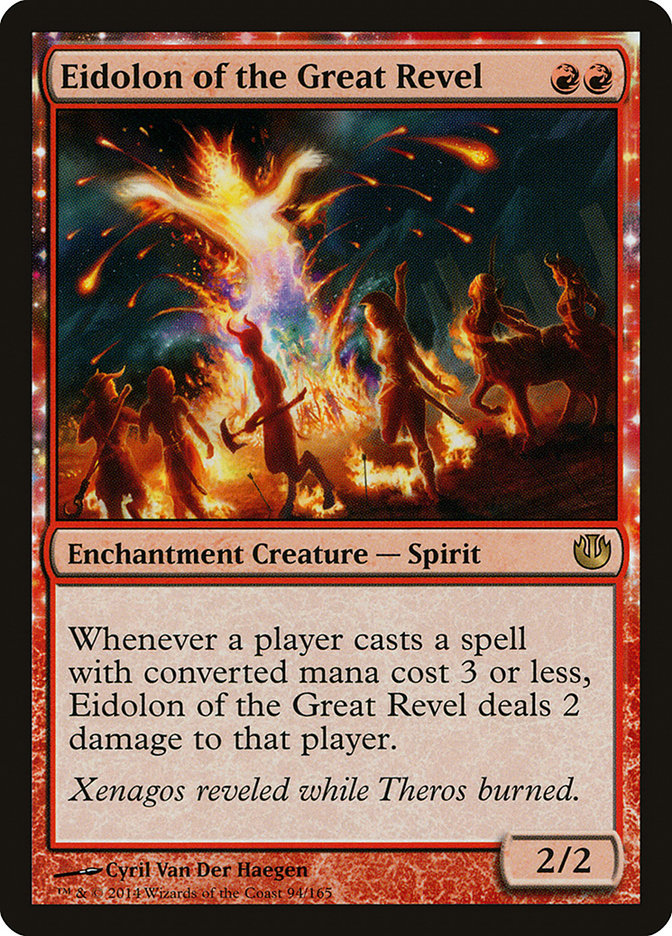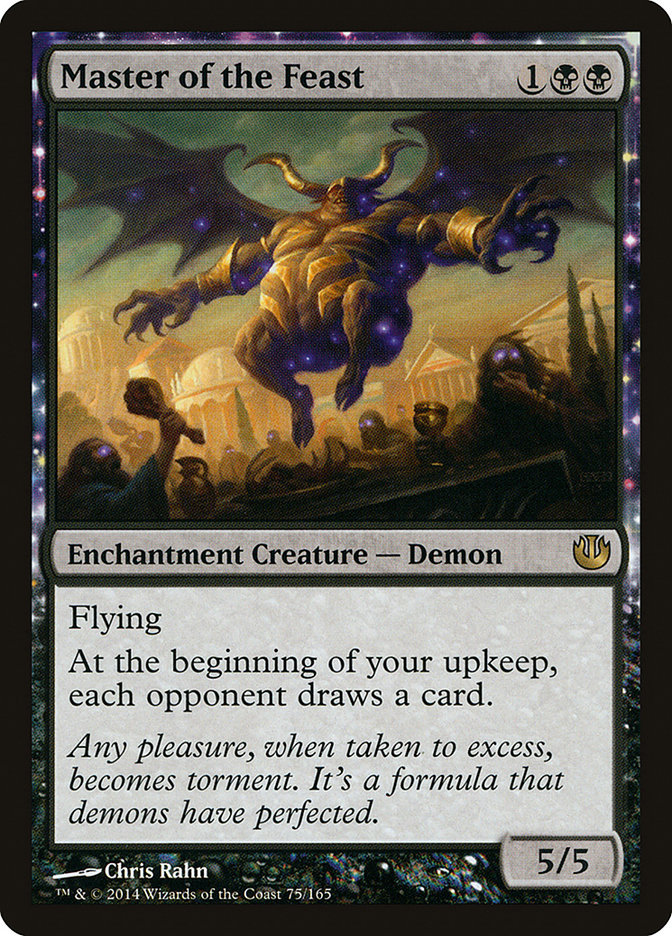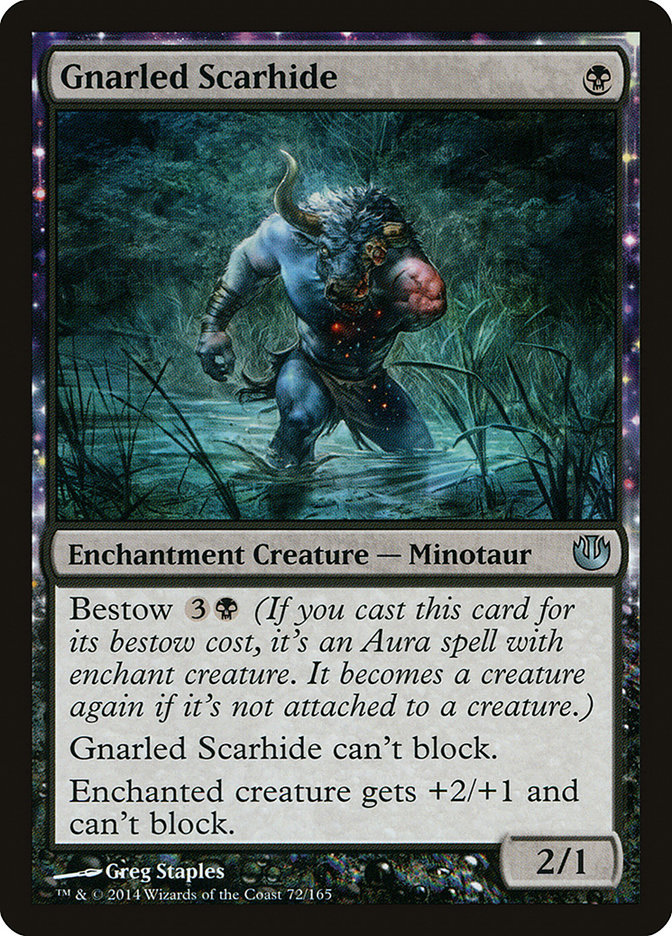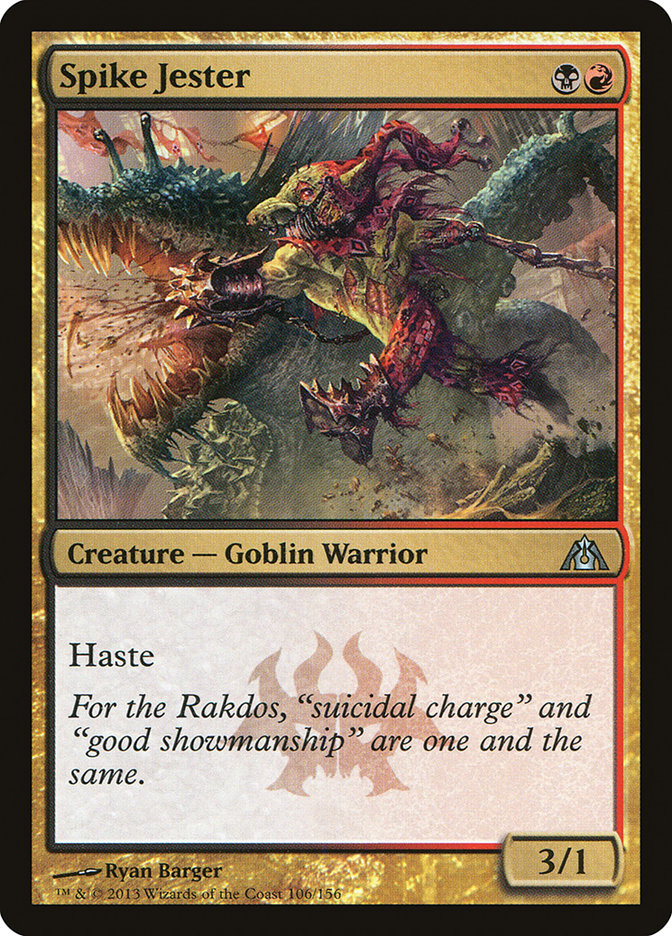With the addition of Mana Confluence to Standard, we have to completely change how we think about the format. Older cards that seemed mediocre can easily be revisited simply because we now have an easier way to cast them. New cards can fit into more exotic shells for decks even if they look like they belong in a specific archetype or color scheme. Whatever we thought we knew about Standard, it is going to change.
Significantly.
In the latest episode of Above The Curve, Brad claimed that it is not going to make as big of an impact as most people think. The truth of the matter is that City of Brass and any proxy thereof has been playable throughout Magic’s history and generally very good. Even one of the worst versions, Tarnished Citadel, saw some play in Odyssey Block Constructed and is still regularly played in versions of Dredge in Legacy.
Mana fixing is easily the most important aspect of Magic in its current state. Every set produces bigger and better spells, but those generally come with some constraints. Whenever a land comes around that can produce all five colors of mana without a major drawback, it’s worth taking the time to figure out just how good that card can be. Reflecting Pool completely changed Standard alongside Vivid Creek and the like, but this new five-color land is geared toward making aggressive decks stronger as opposed to control decks.
For the most part, the more colors a deck plays, the rougher its mana base is on the player’s life total. With shock lands being the primary source of color fixing, you’re going to be taking a lot of damage from your lands when you add Mana Confluence to the mix. The decks that can ignore that specific drawback the most are going to be the ones that want Mana Confluence the most. If you can play a deck that cares way more about its opponent’s life total than its own, you’ve probably found a home for Mana Confluence.
If you watched our Versus video on Monday, you saw Brad playing a U/W/R Heroes deck featuring four copies of Mana Confluence. Without Mana Confluence the deck would be mostly unplayable, but having a land that can consistently cast every spell in the deck is unbelievably strong and could give the deck exactly what it needs to actually stand a chance in such a hostile format.
And if a deck featuring four copies of Trait Doctoring can be competitive, just imagine the possibilities. So many color combinations have now been unlocked, and it’s probably just a race to see who can build the best version of the best aggro deck. I’ve been messing around with a few ideas lately, but I won’t know for sure how good these decks are until the set goes live and I get some real games in.
Terms Of Enrampagement (A Working Title)
I will say that Brad and I have been testing quite a bit with proxied new cards in preparation for our Versus videos, so expect a lot of new ideas and twists on old favorites coming very soon. For now you’re just going to have to trust me.
Creatures (30)
- 4 Ash Zealot
- 4 Rakdos Cackler
- 4 Burning-Tree Emissary
- 4 Ghor-Clan Rampager
- 4 Firefist Striker
- 4 Firedrinker Satyr
- 4 Mogis's Warhound
- 2 Prophetic Flamespeaker
Lands (22)
Spells (8)
Sideboard

This is my updated list of the R/G Aggro deck I played in our Versus video that was published today. I tried out some new cards in the video, but they generally ended up being worse than a shell focused on Burning-Tree Emissary. However, I do have some good words to say about some of the new cards in this list.
This card just feels absurd, especially in a Burning-Tree Emissary deck. It might be worse than Gore-House Chainwalker when you actually cast it, but the fact that it can bestow for a paltry three mana is huge and will make threats like Ash Zealot much tougher to deal with. And when you start combining Mogis’s Warhound with other spells that make combat worse, such as Madcap Skills and Ghor-Clan Rampager, killing your opponent should be a breeze.
The stats on Mogis’s Warhound along with its drawback make it a deceptive card to evaluate. When I first saw it spoiled, I didn’t take a second look, but after thinking about it more (and playing with it a bit), I have a ton of respect for it. Having cards in an aggro deck that are versatile and have value at different points in the game is fantastic.
In the video today, Prophetic Flamespeaker was strong but not something I wanted to draw too much of. You need to establish a board presence early on, and drawing multiple of Prophetic Flamespeaker is awkward. I do like it alongside Madcap Skills, Mogis’s Warhound, and Ghor-Clan Rampager, but I don’t think you want more than a few. In this particular shell it’s probably worse than something like Viashino Slaughtermaster, but its ability to produce card advantage should not be ignored. Even if you are just spewing a few additional creatures onto the board, that could be enough to break out of a stalled game.
While Act of Treason has been legal and hasn’t seen a lot of play, I think Harness by Force is a pretty solid upgrade worth talking about. If you ever start to flood out a little, being able to steal two gigantic creatures and crack back on your opponent is huge. If graveyard-based decks running fatties like Nemesis of Mortals and the like become more popular, then this card will be an all-star. For now I mostly just want to try it out and see if I like it, though I will admit it could be mediocre.
And this card gets an honorable mention:
Eidolon of the Great Revel will end up being ridiculous for a lot of different reasons. Pyrostatic Pillar has been a staple sideboard card in multiple formats, but the fact that Eidolon gives you a Grizzly Bears attached to it is bonkers. In our video Eidolon of the Great Revel overperformed, but I’m not sure if it is better than Ash Zealot in this particular build. Having haste is a big game, and the first strike ability works too well alongside the rest of your deck. I would like both, but you can’t cast Eidolon with Burning-Tree Emissary’s ability, which means we probably can’t fit it into this particular shell without cutting Ash Zealot.
Keep an eye on this card, as I think it will end up being one of the defining cards of the format if it finds the right home. Even though it seems counterintuitive to play a card such as Eidolon of the Great Revel in a deck where nearly every spell deals you damage, you will drown your opponent with its ability. Much like the argument for Mana Confluence, your own life total matters so much less than your opponent’s. With such a low curve, your opponent will be forced to interact with you in the early turns or will end up dying anyway. And if they do interact with you, they will be severely punished for it.
It is often correct to suit up other creatures with stuff like Mogis’s Warhound and Madcap Skills, forcing your opponent’s attention away from Eidolon of Great Revel and thereby increasing the total amount of damage they’re dealt throughout the game. Every point matters in a red deck because your entire goal is to make sure they get to zero life. As long as you have at least one point of life left, nothing else matters. This is one of the reasons why cards like Flame Rift are so powerful in Legacy.
Back In Black
I’ve written quite a bit about aggressive black decks in the past month or so, but only now is the entire picture clear. Mana Confluence enabling a seamless flow between your primary and secondary color makes the deck so much stronger. I recently wrote about how powerful Lightning Strike is alongside such an aggressive curve of early black threats, but I also noted that the mana base just wasn’t there to support it. Now with Mana Confluence you can basically do whatever you want as long as you’re willing to pay for it.
There are a lot of cards from Journey into Nyx that will have a significant impact on this archetype aside from the much smoother mana base via Mana Confluence. Let’s take a look.
Creatures (26)
- 4 Rakdos Cackler
- 4 Spike Jester
- 4 Tormented Hero
- 2 Spiteful Returned
- 4 Gnarled Scarhide
- 4 Mogis's Warhound
- 4 Master of the Feast
Lands (24)
Spells (10)
Sideboard

Like with all new decks I’m not positive that the sideboard is built correctly, but we want specific tools to beat specific decks. At the moment the decks I’m most afraid of feature Courser of Kruphix and a host of gigantic green idiots. This means that having access to the full complement of Doom Blade and Lifebane Zombie is important for picking them apart while also having utility in a number of other matchups.
The sheer number of matchups where Doom Blade is good is staggering, but combining it with Pharika’s Cure allows you to potentially transform into a slower and more controlling deck when the time calls for it. Mono-Blue Devotion can be a troublesome matchup, and turning some of your weaker threats into removal spells could give you the boost needed to overcome them.
Dark Betrayal is pretty straightforward, but I fully expect Pack Rat and company to continue their dominant streak. Having ways to kill Desecration Demon for a very small mana investment will give you the tempo boost you need to wipe the floor with them, let alone deal with nuisances like Nightveil Specter.
As for the new cards . . .
This guy feels incredibly similar to Goblin Guide in both theory and practice. People were more than fine with giving their opponent a land just to deal them two damage. With Master of the Feast, we are in a similar boat, except the exchange on both damage and mana investment is much higher.
If they’re able to kill Master of the Feast on your turn after drawing a card, it will not be great for you. Luckily, a 5/5 flier for three mana is just strong enough to warrant such a gamble. Master of the Feast will die on your opponent’s turn most of the time thanks to the popularity of Detention Sphere, and Supreme Verdict and the lack of Ultimate Price running around, meaning that it will either be swinging for five or dying without giving them a card in return.
Unfortunately Master of the Feast was not yet spoiled when we filmed the Versus video that went up last Wednesday, but I think it is just a better card than Herald of Torment for an aggressive deck such as this.
These are two very solid creatures that I’ve talked about quite a bit, but I want to explain why they are so good in this type of deck. Not a lot of your threats are big enough to punch through an opposing Courser of Kruphix or even Sylvan Caryatid. With that in the back of your mind, wouldn’t you want your threats to have applications outside of their normal casting cost?
Bestow is not a mechanic we’ve seen too much of in Standard yet aside from a scant few outliers like Boon Satyr. With the new set comes a new breed of creatures featuring the mechanic, which have a much more aggressive cost to play as well as bestow. Mogis’s Warhound will be a fantastic card in most aggressive red decks aside from the currently popular R/W Burn deck. I am excited to see it in action outside of mono-red decks.
As for Gnarled Scarhide, the aggressive black decks really needed another cheap solid threat. The fact that it can have significant value outside of the first turn is not something we see a lot out of traditional one-drop creatures.
I am ashamed to have cast Pain Seer, as that guy is just . . . embarrassing. I know that Spike Jester isn’t exactly a new card, but it hasn’t really seen a ton of play in Standard due to the fact that last season was all about Thragtusk and this season didn’t offer up great mana bases for two-color aggressive decks. With such a strong focus on devotion, it’s no wonder that people forgot it existed. Now with Mana Confluence I don’t think that will be much of a problem anymore.
But let me tell you, leading a game off with any one-drop creature into Spike Jester is a ridiculous start on the play and still very strong on the draw. Most decks outside of Mono-Blue Devotion won’t put up much resistance, and you will easily bottleneck their spot removal since your curve is so low.
This deck has a high focus on hitting a one-drop creature on the first turn, which allows you to start applying pressure while they are still in the development phase. But once they get online and start casting spells that outclass your own, you should be able to begin smashing through their defenses with your bestow creatures or Master of the Feast. And if their threats get hit by Lightning Strike or Hero’s Downfall, you can potentially end the game on the spot.
I’m not sure if this specific take on B/R Aggro is better than the R/G Aggro deck posted above, but I do know that I want to try out all sorts of aggressive decks now that I have access to Mana Confluence.
The Dream Is Real
In the immortal words of Tom Hardy (and yes, I know I’ve quoted this before):
“You mustn’t be afraid to dream a little bigger darling.”
Creatures (29)
- 4 Gore-House Chainwalker
- 4 Rakdos Cackler
- 4 Burning-Tree Emissary
- 4 Experiment One
- 3 Ghor-Clan Rampager
- 4 Firefist Striker
- 4 Firedrinker Satyr
- 2 Mogis's Warhound
Lands (20)
Spells (11)
Sideboard

What do we have here? A new take on an old favorite. We’re a little bit slower thanks to the rotation of Champion of the Parish and friends, but the concept remains the same. We just want to abuse Burning-Tree Emissary and try to kill the opponent as quickly as possible.
Experiment One is a fine card in a deck like this, but the major problem is we don’t have a lot of crazy cards like Flinthoof Boar to make it into a 3/3. What we do have is Gore-House Chainwalker, which we want as a four-of to make our starts featuring Experiment One as explosive as possible.
Again, we are centering the bulk of our aggression on Burning-Tree Emissary, enabling it to be as powerful as possible. Firefist Striker and Gore-House Chainwalker allow us to have a solid core of creatures that can be cast off Burning-Tree Emissary, but we shouldn’t forget how good it is to lead with Burning-Tree into Lightning Strike after our opponent tries to put up a blocker. This is one of the fastest possible decks you can build in Standard, and the mana base is actually reasonable thanks to Mana Confluence.
Since we are a red-based deck and basically just splashing the other two colors, we get to play eleven total Mountains in our deck. This makes Chained to the Rocks one of the better removal spells for our deck to play. With Temple of Malady coming into the format there is a possibility that Abrupt Decay will see more play, but I think it is worth the risk because of how good Master of Waves is against us.
This particular build of Naya Blitz could be cleaned up a little. I know there is likely a problem when there are only three copies of Ghor-Clan Rampager, but I’m honestly not sure if I like it better or worse than Mogis’s Warhound. The trick is finding the right balance of threats to cast off Burning-Tree Emissary since you have to take so many factors into consideration. Experiment One needs to grow up nice and strong, so four copies of Gore-House Chainwalker feels correct, but that means fewer copies of Rampager and Warhound. Similarly, if we want to fit Boros Charm into the mix both to deal the last few points of damage and to protect us from Supreme Verdict, we have to make sacrifices.
Aggressive decks like this tend to evolve significantly over time, adjusting to battle specific decks. Depending on the popularity of Mono-Blue Devotion, it could be correct to play four copies of Chained to the Rocks in the maindeck, which would in turn lower the value of non-interactive cards like Boros Charm. We might also want access to a few more removal spells for annoyances like Tidebinder Mage, Frostburn Weird, and even Nightveil Specter.
For the most part, I’m sold on trying out any and all aggressive decks that seem like they’re pushing the envelope with Mana Confluence. I think the card is absolutely ridiculous given how easy playing a third color could potentially be, but the problem is finding the best home for it. That might mean the best aggressive deck to play could change from week to week based on the results from the last tournament, but there is something I do know:
I’ll pay any amount of life to put my opponent to zero.

